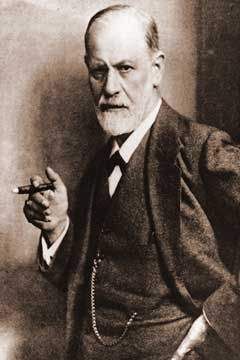Benedek, T. (1959). Parenthood as a developmental phase: A contribution to the libido theory. Amer. Psychoanal. As. m., 7:389-417.
Benjamin, J. D. (1961a). Some developmental observations relating to the theory of anxiety. Amer. Psychoanal. Assn., 9:652-668.
Benjamin, J. D. (1961b). The innate and the experiential in child development. In Lectures on experimental psychiatry, cd. H. W. Brosin. Pittsburgh: Univ. of Pittsburgh Press, 1961, pp. 19-42.
Benjamin, J. D. (1963). Further comments on some developmental aspects of anxiety. In Counterpoint, ed. H. S. Gaskill. New York: Int. Univ. Press, pp. 121-133.
Beres, D. (1958). Vicissitudes ofsuperego functions and superego precursors in childhood. Psychoanal. Study Child, 13:324-352.
Beres, D. (1981). Self, identity, and narcissism. Psychoanal. Q., 50:515-534.
Bergman, D., and Escalona, S. K. (1949). Unusual sensitivities in very young children. Psychoanal. Study Child, 3/4:333-352.
Bernfeld, S. (1938). Types of adolescence. Psychoanal. Q., 7:243-253.
Bernstein, D. (1983). The female superego: A different perspective. Int. J. Psychoanal., 64:187-201.
Bertalanffy, L. von (1968). General system theory: Foundations, development, applications. New York: George Braziller.
Bettelheim, B. (1976). Theusesofenchantment: The meaning and importance of fairy tales. London: Thames and Hudson.
Bibring, E. (1947). The so-called English School ofpsychoanalysis Psychoanal. Q., 16:69-93.
Bibring, G. L.; Dwyer, T. F; Huntington, D. S.; and Vallenstein, A. F. (1961). A study of the psychological processes in the pregnancy and earliest mother – child relationship. Psychoanal. Study Child, 16:9-72.
Blos, P. (1958). Preadolescent drive organization. J. Amer. Psycho-anal. Assn., 6:47-56.
Blos, P. (1962). On adolescence: A psychoanalytic interpretation. New York: Free Press.
Blos, P. (1967). The second individuation process of adolescence. Psychoanal. Study Child, 22:162-186.
Blos, P. (1968). Character formation in adolescence. Psychoanal. Study Child, 23:245-263.
Blos, P. (1970). The young adolescent: Clinical studies. New York: Free Press.
Blos, P. (1974). The genealogy of the ego ideal. Psychoanal. Study Child, 29:43-88.
Blos, P. (1976). How and when does adolescence end? In Adolescent psychiatry. Vol. 5, cd. S. C. Feinstein and P. Giovacchini. New York: Aronson, pp. 5-17.
Blos, P. (1979). The adolescent passage. New York: Int. Univ. Press.
Blum, H. P. (1976). Masochism, the ego ideal, and the psychology of women. Amer. Psychoanal. Assn., 24 (Suppi.): 157-191.
Blum, H. P. (1978). Symbolic processes and symbol formation. Int. J. Psychoanal., 59:455-471.
Blum, H. P. (1982). Theories of the self and psychoanalytic concepts: Discussion. Amer. Psychoanal. Assn., 30:959-978.
Blum, H. P. (1985). Superego formation, adolescent transformation, and the adult neurosisy. Amer. Psychoanal. Assn., 33:887-909.
Boesky, D. (1988). The concept of psychic structure. J. Amer. Psychoanal. Assn., 36 (Suppi.): 113-135.
Bornstein, B. (1951). On latency. Psychoanal. Study Child, 5:279-286.
Bornstein, B. (1953). Fragment of an analysis of an obsessional child: The first six months of analysis. Psychoanal. Study Child, 8:313-332.
Bower, T. G. R. (1974). Development in infancy. San Francisco: Freeman Press.
Bowlby, J. (1958). The nature of the child's tic to his mother. Int. J. Psychoanal., 39:350-373.
Bowlby, J. (1960a). Grief and mourning in infancy and early childhood. Psychoanal. Study Child, 15:9-52.
Bowlby, J. (1960b). Separation anxiety. Int. J. Psychoanal., 41:89-113.
Bowlby, J. (1961). Processes of mourning. Int. J. Psychoanal., 42:317-340.
Bowlby, J. (1969). Attachment and loss. Vol. Attachment. New York: Basic Books.
Bowlby, J. (1973). Attachment and loss. Vol. 2, Separation, anxiety, and anger. NewYork: Basic Books.
Bowlby, J. (1980). Attachment and loss. Vol. 3, Loss, sadness and depression. NewYork: Basic Books.
Bowlby, J. (1981). Psychoanalysis as a natural science. Int. Rev. Psychoanal., 8:243-256.
Brazelton, Т. В. (1973). Neonatal behavioral assessment scale. London: Spasticslnternational Medical Publications.
Brazelton, Т. В. (1982). Joint regulation ofneonate parent behavior. In Social interchange in infancy, ed. E. Z. Tronick. Baltimore: University Park Press, pp. 7-27.
Brazelton, T. B., and Als, H. (1979). Four early stages in the development ofmother – infant interaction. Psychoanal. Study Child, 34:349-369.
Brazelton, Т. В.; Koslowski, В.; and Main, M. (1974). The early mother – infant interaction. In The effect of the infant on its caregivcr, cd. M. Lewis and L. Roscnblum. New York: Wiley, pp. 49-77.
Bialriton, Т В.; Tronick, E.; Adamson, I.; Als, H.; and Wise, S. (1975). Early mother – infant reciprocity. In Parent – infant interaction. Ciba Foundation Symposium 33. Amsterdam: Elsevier, pp. 137-154.
Brenner, C. (1959). The masochistic character: Genesis and treatment./. Aner. Psychoanal. Assn., 7:197-226.
Brenner, C. (1974). On the nature and development of affects: A unified theory. Psychoanal. Q., 43:532-556.
Brenner, C. (1979). The components of psychic conflict and its consequences in mental life. Psychoanal. Q., 48:547-567.
Brenner, C. (1982). The mind in conflict. New York: Int. Univ. Press.
Brenner, C. (1987). Notes on psychoanalysis by a participant observer: A personal chronicle. J. Amer. Psychoanal. Assn., 35:539-556.
Breuer, J. and Freud, S. (1893-1895). Studies on hysteria. S. E., 2.
Brody, M. W, and Mahoney, V. P. (1964). Introjection, identification and incorporation. Int. J. Psychoanal., 45:57-63.
Brody, S. (1980). Transitional objects: Idealization of a phenomenon. Psychoanal. Q., 49:561-605.
Brody, S. (1981). The concepts of attachment and bonding. Amer. Psychoanal. Assn., 29:815-829.
Brody, S. (1982). Psychoanalytic theories of infant development and its disturbances: A critical evaluation. Psychoanal. Q., 51:526-597.
Brody, S., and Axelrad, S. ( 1970). Anxiety and ego formation in infancy. New York: Int. Univ. Press.
Brody, S., and Axelrad, S. (1978). Mothers, fathers, and children: Explorations in the formation of character in the first seven years. New York: Int. Univ. Press.
Broussard, E. (1984). The Pittsburgh firstborns at age nineteen years. In Frontiers of infant psychiatry. Vol. 2, ed. J. Call, E. Galenson, and R. L. Tyson. New York: Basic Books, 1984, pp. 522-530.
Bruner, J. S. (1974). From communication to language: A psychological perspective. Cognition, 3:255-287.
Bruner, J. S. (1977). Early social interaction and language acquisition. In Studies in mother-infant interaction, ed. H. R. Schaffer. London: Academic Press, pp. 271-289.
Brunswick, R. M. (1940). The preoedipal phase of libido development. In The psychoanalytic reader, ed. R. Fliess. New York: Int. Univ. Press, pp. 261-283.
Burgner, M. (1985). Oedipal experience: Effects on development of an absent father. Int.]. Psychoanal., 66:311-320.
Burgner, M., and Edgcumbe, R. (1972). Some problems in the conceptualization of early object relationships: Part II, The concept of object constancy. Psychoanal. Study Child, 27:315-333.
Burgner, M., and Kennedy, H. (1980). Different types of sadomasochistic behavior in children. Dialogue, 4:49-58.
Burlingham, D. (1952). Twins: A study of three pairs of identical twins. London: Imago.
Burlingham, D. (1973). The preoedipal infant-father relationship. Psychoanal. Study Child, 28:23-47.
Burlingham, D. and Freud, A. (1944). Infants without families. In The writings of Anna Freud. Vol. 3. New York: Int. Univ. Press, 1973, pp. 543-666.
Burns, P.; Sander, L.; Stechler, G.; and Julia, H. (1972). Distress in feeding: Short-term effects of caretaker environment of the first ten days. J. Amer. Acad. Child Psychiat., 11:427-439.
Busch, F. (1974). Dimensions of the first transitional object. Psychoanal. StudyChild, 29:215-229.
Buxbaum, E. (1945). Transference and group formation in children and adolescents. Psychoanal. Study Child, 1:351-366.
Buxbaum, E. (1980). Between the Oedipus complex and adolescence: The «quiet» time. In The course of life. Vol. 2, cd. S. 1. Greenspan and G. H. Pollock. Publication No. (ADM) 80-999. Washington, D.C.: DHHS, pp. 121-136.
Calef, V., and Weinshel, E. (1979). The new psychoanalysis and psychoanalytic revisionism. Psychoanal. 148:470-491.
Call, J. D. (1964), New born approach behaviorand early ego evelopment. J. Psychoanal., 45:286-294.
Call, J. D. (1979). Introduction to normal development. In Basic handbook of child psychiatry. Vol. I, ed. J. Noshpitzetal. New York: Basic Books, pp. 3-10.
Call, J. D. (1980). Some prelinguistic aspects of language development. J. Amer. Psychoanal. Assn., 28:259-289.
Call, J. D. (1983). Toward a nosology of psychiatric disorders in infancy. In Frontiers of infant psychiatry. New York: Basic Books, pp. 117-128.
Call, J. D. (1984). From early patterns of communication to the grammar of experience and syntax in infancy. In Frontiers of infant psychiatry. Vol. 2, cd. J. D. Call, E. Galenson, and R. L. Tyson. New York: Basic Books, pp. 15-29.
Call, J. D., and Marschak, M. (1966). Styles and games in infancy. In Infant psychiatry, ed. E. Rexford, L. Sander, and T. Shapiro. New Haven: Yale Univ. Press, 1965, pp. 104-113.
Campos, J.J.; Barrett, K. C.; Lamb, M. E.; Goldsmith, H. H.; and Stenberg, C. (1983). Socioemotional development. In Handbook of child psychology. Vol. 2, ed. M. Haith and J.J. Campos. New York: Wiley, pp. 783-916.
Cath, S. H.; Gurwitt, A. R.; and Ross, J. M., eds. (1982). Father and child: Developmental and clinical perspectives. Boston: Little, Brown.
Chasseguet-Smirgel, J. (1970). Female sexuality: New psychoanalyhc views. Ann Arbor: Univ. of Michigan Press.
Chess, S., and Thomas, T. (1986). Temperament in clinical practice. New York: Guilfoid Press.
Chodorow, N. (1978). Reproduction of mothering: Psychoanalym and the sociology of gender. Berkeley: Univ, of California Press.
Glower, V. L. (1976). Theoretical implications in current views of masturbation in latency girls. Amer. Pchnanal. Asm., 24:109-126.
Colarusso, C. A., and Nemiroff, R. A. (1981). Adult development: A new dimension of psychodynamic theory and practice. New York: Plenum Press.
Compton, A. (1980). A study of the psychoanalytic theory of anxiety: Part III, A preliminary formulation of the anxiety response. J. Amer. Psychoanal. Assn., 28:739-774.
Compton, A. (1981 a). On the psychoanalytic theory ofinstinctual drives: Part 111, The complications of libido and narcissism. Psychoanal. 13., 50:345-362.
Compton, A. (1981b). On the psychoanalytic theory ofinstinctual drives: Part IV, Instinclual drives and the ego – id – superego model. Psychoanal. 17, 50:363-392.
Darwin, C. R. (1872). The expression of the emotions in man and animals. Chicago: Univ, of Chicago Press, 1965.
Decarie, T. G. (1965). intelligence and affectivity in early childhood. New York: Int. Univ. Press.
Deese, J. (1973). Cognitive structure and affect in language in communication and affect. In Language and thought, ed. P. Piner, L, Kramcs, and T. Alloway. New York: Academic Press, pp. 91-113.
Demos, E. V. (1982). Facial expressions of infants and toddlers: A descriptive analysis. In Emotion and early interaction, ed. T. Field and E. Fogel. Hilisdale, N.J.: Eribaum, pp. 118-129.
Dcutsch, H. (1930). The significance of masochism in the mental life of women. In The psycho-analytic reader, ed. R. Fliess. New York: Int. Univ. Press, 1948, pp. 223-236.
Deutsch, H. (1932). On female homosexuality. In The psychoanalytic reader, ed. R. Fliess. New York: Int. Univ. Press, 1948, pp. 237-260.
Deutsch, H. (1944). The psychology of women: Apsychoanalytic interpretation. Vol. 1. New York: Grune and Stratton.
Deutsch, H, (1945). The psychology of women: A psychoanalytic interpretation. Vol. 2, Motherhood. New York: Grune and Stratton.
Dewald, P. A. (1981). Adult phases of the life cycle. In The course of life: Psychoanalytic contributions toward understanding personality development. Vol. 3, ed. S. 1. Greenspan and G. H. Pollock. Publication No. (ADM) 81-1000. Washington, D.C.: DHHS, pp. 35-53.
Dowling, S. (1977). Seven infants with esophageal atresia: A developmental study. Psychoanal. Study Child, 32:215-256.
Drucker, J. (1981). Cognitive and affective growth: Developmental interaction. In Development: Concepts of cognition and affect, ed. T. Shapiro and E. Weber. Hilisdale, N. J.: Eribaum, pp. 240-261.
Edelson, M. (1975). Language and interpretation in psychoanalysis. New Haven: Yale Univ. Press.
Edgcumbe, R. M. (1984). The development of symbolization. Bull. Hampstead Clin., 7:105-126.
Edgcumbe, R. M., and Burgner, M. (1975). The – phallic narcissistic phase: A differentiation between preoedipal and oedipal aspects of phallic development. Psychoanal. Study Child, 30:161-180.
Edgcumbe, R. M.; Lundberg, S.; Markowitz, R.; and Salo, F. (1976). Some comments on the concept of the negative oedipal phase in girls. Psychoanal. Study Child, 31:35-62.
Eisnitz, A.J. (1980). The organization of the self – representation and its influence on pathology. Psychoanal. 49:361-392.
Ekman, P. (1984). Expression and the nature of emotion. In Approaches to emotion, ed. K. Schcrer and P. Ekman. Hilisdale, N. J.: Eribaum, pp. 35-55.
Ekman, P., and Friesen, W. V. (1975). UntMiking the face. Englewood Cliffs, N. J.: Prentice-Hall.
Ernde, R. N. (1980a). Emotional availability: A reciprocal reward system for infants and parents with implications for prevention of psychosocial disorders, in Parent – infant relationships, ed. P. M.Taylor. Orlando, Fla.: Game and Stratton, pp. 87-115.
Ernde, R. N. (1980b). Toward a psychoanalytic theory of affect: Part I, The organizational model and its propositions. In The course of life: Infancy and early childhood. Vol. I, ed. S. I. Greenspan and G. H. Pollock. Publication No. (ADM) 80-786. Washington, D.C.: DHHS, pp. 63-83.
Ernde, R. N. (1980c). Toward a psychoanalytic theory of affect: Part II, Emerging models of emotional development in infancy. In The course of life: Infancy and early childhood. Vol. I, cd. S. I. Greenspan and G. H. Pollock. Publication No. (ADM) 80-786. Washington, D.C.: DHHS, pp. 85-112.
Ernde, R. N. (1981). Changing models of infancy and the nature of early development: Remodeling the foundations. J. Amer. Psychoanal. Assn., 29:179-219.
Ernde, R. N. (1983). The prerepresentational self and its affective core. Psycho-anal. Study Child, 38:165-192.
Ernde, R. N. (1984). The affective self: Continuities and transformations from infancy. In Frontiers of infant psychiatry. Vol. 2, cd. J. D. Call, E. Galenson, and R. L. Tyson, New York: Basic Books, pp. 38-54.
Ernde, R. N. (1985). From adolescence to midlife: Remodeling the structure of adult developmcnt.y. Amer. Psychoanal. Assn., 33 (Suppl.): 59-112.
Ernde, R. N. (1988a). Development terminable and interminable: Part I, Innate and motivational factors from infancy. Int. J. Psychoanal., 69:23-42.
Ernde, R. N. (1988b). Development terminable and interminable: Part II, Recent psychoanalytic theory and therapeutic considerations, Int. J. Psychoanal., 69:283-296.
Ernde, R. N.; Gaensbauer, T; and Harmon, R.J. (1976). Emotional expression in infancy: A biobehavioral study. Psychological Issues, Monograph 37. New York: Int. Univ. Press.



